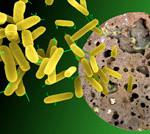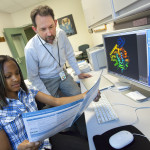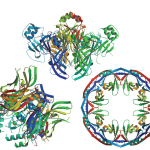Jay Keasling, Associate Laboratory Director for Biosciences, has announced that Paul Adams has accepted the position of Division Director for the Molecular Biophysics & Integrated Bioimaging (MBIB) Division. Adams served as the MBIB Interim Division Director since the Biosciences Area re-organization took effect this past October 1 and has been instrumental in developing a strategic plan and leading the effort to launch the Division.
LDRD Update: Six PBD Researchers Awarded FY15 Funding and FY16 Announcement
The projects of six Physical Biosciences Scientists and Engineers received funding through the FY2015 Laboratory Directed Research and Development (LDRD) program. These projects cover a broad range of topics, including energy, biomanufacturing, and technology and tool development. Together, these efforts account for nearly 15% of the $24.9 million allocated. Eighty-two proposals were selected from a field of 169. There was an equal distribution of new and continuing projects among the selected PBD proposals.
Looking to the Future Earns a Place in History
When presenting a new idea, formulating an experiment, or communicating research, all researchers build on the body of previously published literature. By citing earlier articles, authors lay the groundwork for their hypotheses, justify their results, and relay their methods using a common language.
Berkeley Center for Structural Biology to Receive $5M from HHMI to Build a New Microfocus Crystallography Beamline
The Berkeley Center for Structural Biology (BCSB) has operated five beamlines at the Advanced Light Source (ALS) for more than ten years, helping hundreds of crystallographers to determine the structures of more than 1,000 proteins. Two of the BCSB’s beamlines (8.2.1 and 8.2.2) are funded by the Howard Hughes Medical Institute (HHMI) to support the cutting edge research of structural biologists, including those in the HHMI research community.
Berkeley Lab User Programs Support Ebola Virus Research
The Ebola virus outbreak in West Africa has claimed over 110 lives and more than 170 suspected or confirmed cases have been reported. While there is no known cure, basic research is providing insight into the action of the virus. Zachary Bornholdt and Erica Ollman Saphire from The Scripps Research Institute spearheaded a team of researchers from the University of Wisconsin-Madison, University of Tokyo, and the Japan Science and Technology Agency, studying an Ebola virus protein.
- « Previous Page
- 1
- …
- 7
- 8
- 9
Was this page useful?








